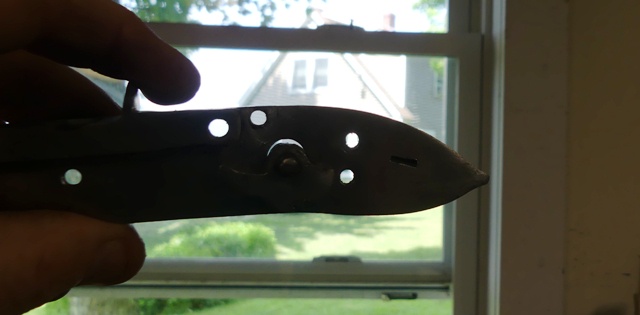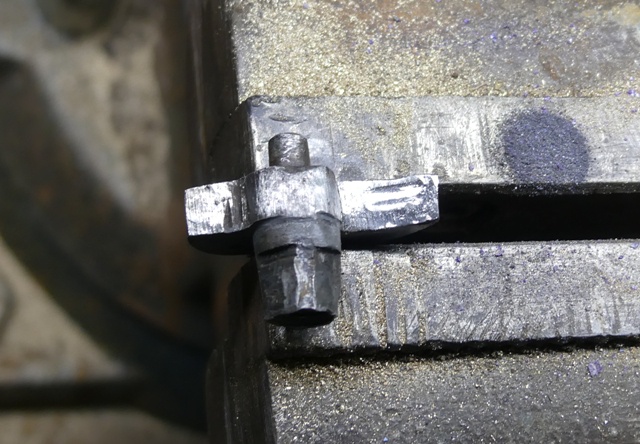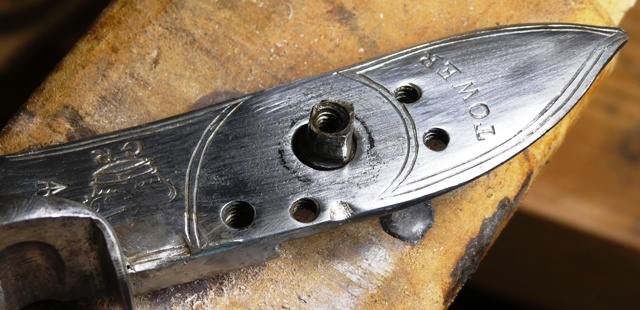beardedhorse
Pilgrim
- Joined
- Apr 10, 2014
- Messages
- 509
- Reaction score
- 400
What is TRS?

Dave seems like the voice of reason in all of this.Thanks Dave ! Much obliged and agree with everything you’ve stated.
Hi Aglukan,Dave is the barrel bigger for safety reasons ?
Hi,Hi Dave -
Any possibility that you could identify your excellent photos of incredibly poor quality as to which company the locks were imported by? I am surprised that you included Loyalist as I have had good quality products from them including one pistol I have had for over 20 years without any need besides normal cleaning and lubrication of the lock to keep it going. I wish I could say the same for the Pedersoli locks I have encountered/owned.
The rifle shoppe will rifle any barrel? Always thought a 75 caliber rifle (Bess) would be fun. Not afraid of recoil , not a 4-bore person but 12 gauge is acceptable
And the rifled 1816s had a higher than usual tendency to burst their barrels, so ultimately the practice was stopped.Yes they will, they will even rifle a wall gun barrel. If you do request one you will wait a long time for it. I’ve never seen a rifled brown bess though, ive seen 1816’s, late charleville’s, Prussian 1809 flintlocks. Rifling a Brown Bess could probably be done in a lower caliber such as .72, on a .77 caliber gun there might be too much taper on the outside to accept riling after around 25 or 30 inches.
I have seen and fired a rifled 1816 in flintlock, with a slightly lower caliber around .67, the concept was based on some experimental rifled 1816’s Based on the greenwood project, three groove progressive depth rifling. The difference in groupings with a .65 round ball was moderately better at 100 yards. I do believe all rifled 1816’s were in percussion conversion.
https://collegehillarsenal.com/greenwood-of-ohio-rifled-sighted-m-1816-rare
Trivia caution;And the rifled 1816s had a higher than usual tendency to burst their barrels, so ultimately the practice was stopped.



Much of that can be solved with a proper safety inspection. Most simply check half cock/full cock, empty barrel and general inspection. When I have ran a line I additionally check spark. A lock that won't spark IS an unsafe weapon as you will be dealing with a loaded gun misfired. A click may not be a big deal when shooting alone but when public is watching it becomes a show. As a result I have been able to run a weekend event with no misfires from a variety of guns (India, Spain, Japan, USA, ect). I have observed events where misfires abounded with cap guns.I have been in reenactments when almost all the muskets failed to fire at the volley. Downright embarrassing
I sometimes think the command for some units should be; Make ready! Aim! Click!
Dave, Warner’s Regt. is blessed to have you and Maria. I’m sure they appreciate it. I wouldHi Bob,
That is why Maria and I hold live firing sessions for Warner's regiment at my home and range. During each weekend event, we inspect all of their locks, fix serious problems and teach them how to clean and care for their guns. Then they are off to the range to shoot first at round paper targets up to a range of 60 yards to learn how their guns shoot and develop their own sight pictures. They also learn the consequences of misfires when you have live loads rather than blanks. That teaches them to make sure their equipment works properly. They then fire at silhouettes using historical loads (160 grains 2F powder and 0.69 ball in paper patch). That means about 145 grains of powder go down the barrel. They feel the recoil and when they volley fire, they feel the shock through their feet. On Sunday they run the gongs, a timed event in which each member shoots at gongs and novelty targets while on the move. For each hit they deduct 1 minute from their time. At each station they have 3 opportunities to fire. If their gun fails after 3 attempts, they have to withdraw. The first time we had them run the gongs, half had to withdraw. It has gotten better since.
dave
When i purchased my Baker from Middlesex the owner was acting as a gunsmith. One of the reasons for my long wait was to tune the lock and “ proof “ the barrel. Only real problem i have had with the gun was a bore way over .620/20 gauge. I will admit to firing it 200 rounds or less.
I was not impressed with their sales process. I don’t think one should sell something they don’t have in stock.
This was 2008 or so.
I have been in reenactments when almost all the muskets failed to fire at the volley. Downright embarrassing
I sometimes think the command for some units should be; Make ready! Aim! Click!
I heard that happening. Either not returning or sending back not fixed but with a bill. I don’t like to talk bad of a business but this has happed too many times.I’m working with someone on fixing a Middlesex baker, tryng to find a replacement lock. The lock was sent to middlesex 7 or 8 years ago for tuning and repairs, the owner never got it back.